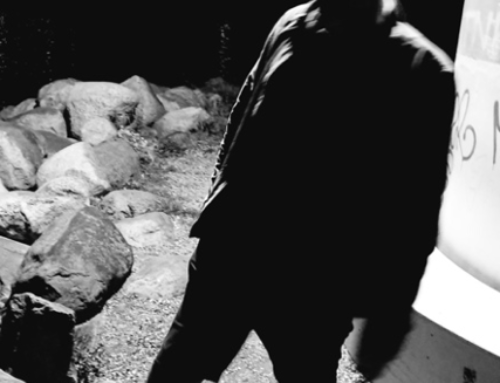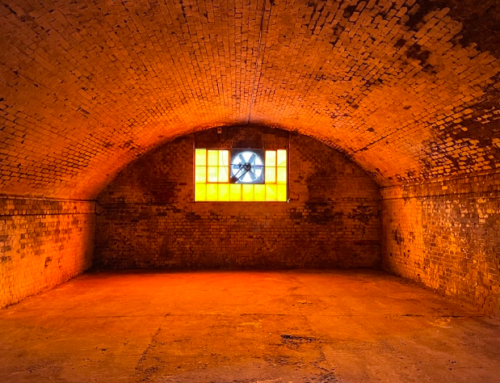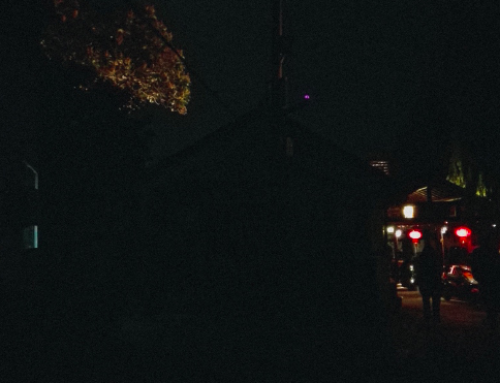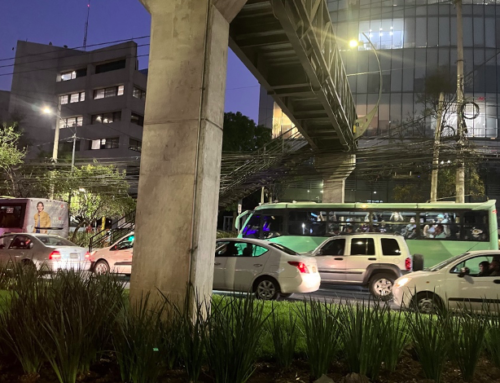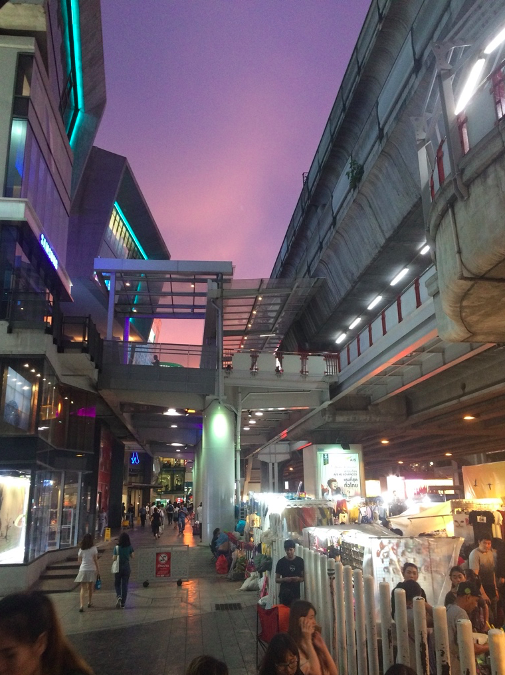
Violet Sky. Bangkok, Thailand. Photo by authorow is quiet in anticipation as the trucks arrive.
It is late September in Bangkok. The clouds glow a misty orange in a slice of sky above me as I sit on the bank’s front steps. Pedestrians flow overhead, forming a dense crowd that crisscrosses between the bustling luxury malls and the train station. The sidewalk just below is quiet in anticipation as the trucks arrive.
Assisting a few vendors in the market, I watch as two workers, who I am told are Burmese, push an unmarked van down the uneven pavement and unload neat bundles of metal from its open cargo hold. Following closely behind them is a second truck, from which neatly labeled plastic containers and bags are tossed down to the sidewalk on either side. Two men stand with their arms crossed overseeing the process, speaking in low tones with furrowed brows.
As the sky darkens to a shade of violet, the unnatural glare of Siam Square’s LED builds up and the crosswalk awakens. Vendors mull about, chatting and munching as they wait for their goods to arrive and stalls to be constructed.
As they are unpacked, the small bundles of metal come to life, growing and morphing depending on the needs of each vendor. Vendors stretch cloth across metal panels, stack boxes of shoes to create unique displays, and clip lights onto frames to ensure that each painstakingly organized group of accessories provokes passersby to pause, admire, and purchase.
Motorcycle taxi drivers gathered across from my post, next to a poster listing their destinations, enjoy the newfound bustle of the commercial nightshift. Adjacent to their taxi stand are small signs placed by the municipal government, now hidden by the stalls, requesting that goods not be left along the footpaths.
A neighboring vendor who runs a small stall selling watches invites me for a walk. We go just a block away and place tonight’s offerings of eggs and fruit in front of the spirit shrine. She bows her head and gently brings her hands together to wai out of respect to the spirit, asking for good sales that evening.
Upon our return, goods are leaned against architectural barricades of plants and pillars, placed along the sidewalk. Although they are meant to block vendors from encroaching upon the adjacent mall, these developer interventions only discourage a growing body of pedestrians from moving naturally between the bustling market and the mall’s tantalizing airconditioned interiors.
The bank is closed by the time the stalls are erected along its entrance and customers begin to peruse each vendor’s items. We are lucky to have the steps to sit on while many vendors bring stools or awkwardly perch on their plastic storage containers. The bank’s entryway provides protection from the elements as well as space to sort and store wares while we chat. Our conversations are often short as they are interrupted by customers.
Vendors ask me to watch their stalls as they take bathroom breaks. By this point in the evening, the densely packed, small shops in the adjacent mall’s basement are closed yet the bathrooms remain open. Pedestrians continue to flow through the shopping center, either to visit its busy restaurants on the upper floors or to glance at the products being sold in stalls that were recently set up in its street-level open spaces by developers.
Cash to pay off tesagit (officers) and provide electricity is collected by designated figures who walk from one end of the market to the other as a deep blue saturates the violet sky. Food vendors also stop by each stall asking for orders. Their deliveries of plastic bags and styrofoam bowls filled with dinner arrive an hour later. Friends and family drop by to say hello. Every once in a while, an officer casually observes this bustle with a vacant expression.
Weeks later, these sidewalks and the bank steps stand empty except for a single tent. Additional yellow fences have been erected, creating a blockade between the mall and sidewalk. Behind a group of district officers stationed in the tent, a sign announces that the city and military officials are working together to “give back the sidewalks to the citizenry.” One of the unmarked trucks remains parked in front of the steps of the bank, however, it is now plastered with signs written by vendors pleading for sympathy from the municipal government.
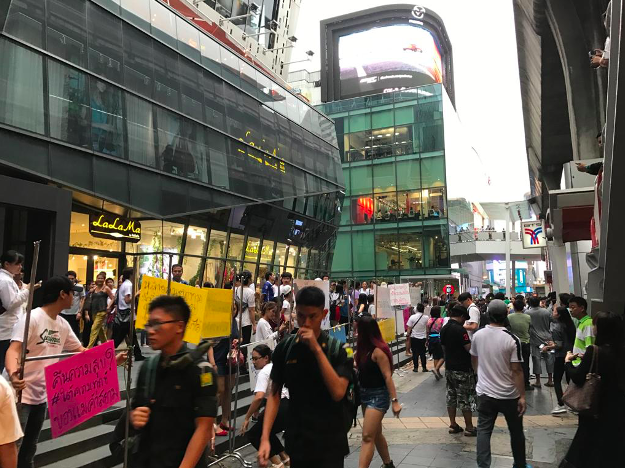
Last Stand. Bangkok, Thailand. Photo by author
At dusk vendors launch into action. With choreographed precision, metal bundles are tossed down from the truck to the pavement and erected at a speed that I have never seen. Vendors swiftly line the sidewalk with the frames once used to display their goods. Only now they hold them as signs in protest of their eviction. I look over at the officers, curious to see their reactions to this illegal demonstration. Not one of them flinches as they continue to eat their early dinner.
Trude Renwick, PhD, is currently a Postdoctoral Fellow in the Society of Fellows in the Humanities at the University of Hong Kong affiliated with the Department of Art History.
Cite As: Renwick, Trude. 2023 “Pavement Disrupted” In “Flash Ethnography: Dusk” Aaron Hames and Derek Pardue, eds., American Ethnologist website, June 20 2023 https://americanethnologist.org/online-content/collections/dusk-collection/pavement-disrupted/
